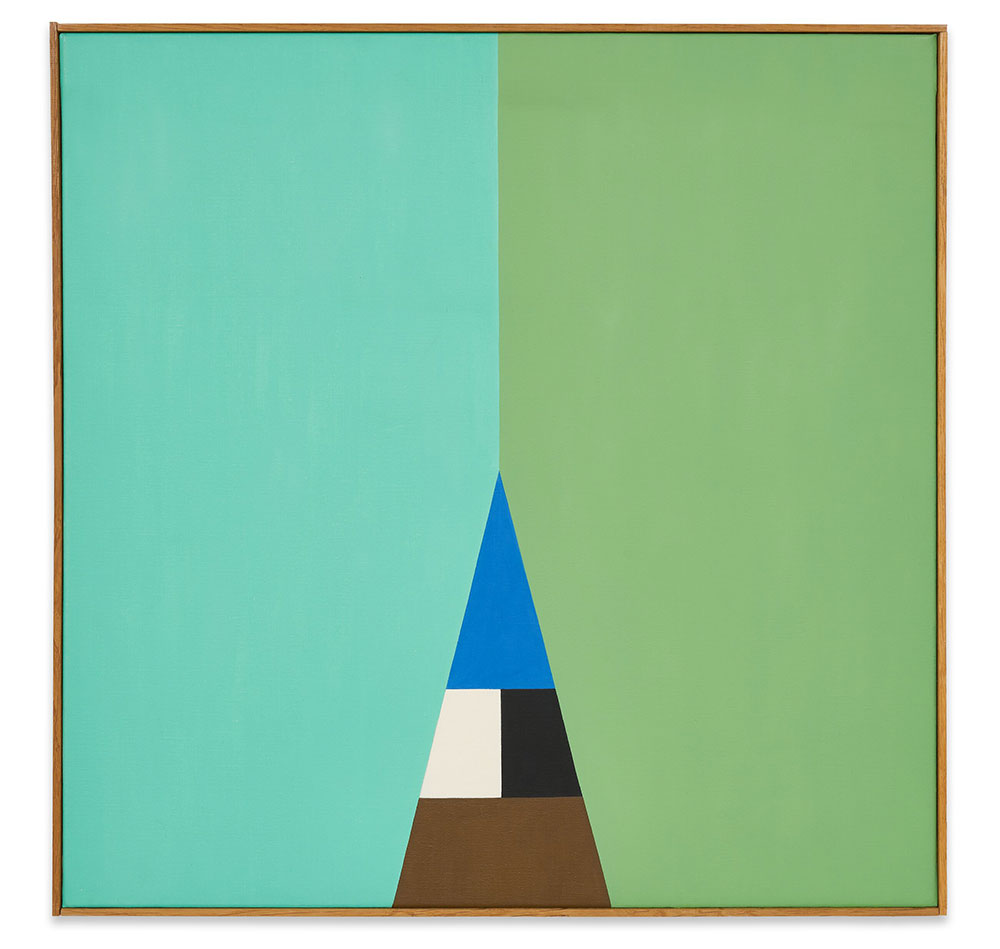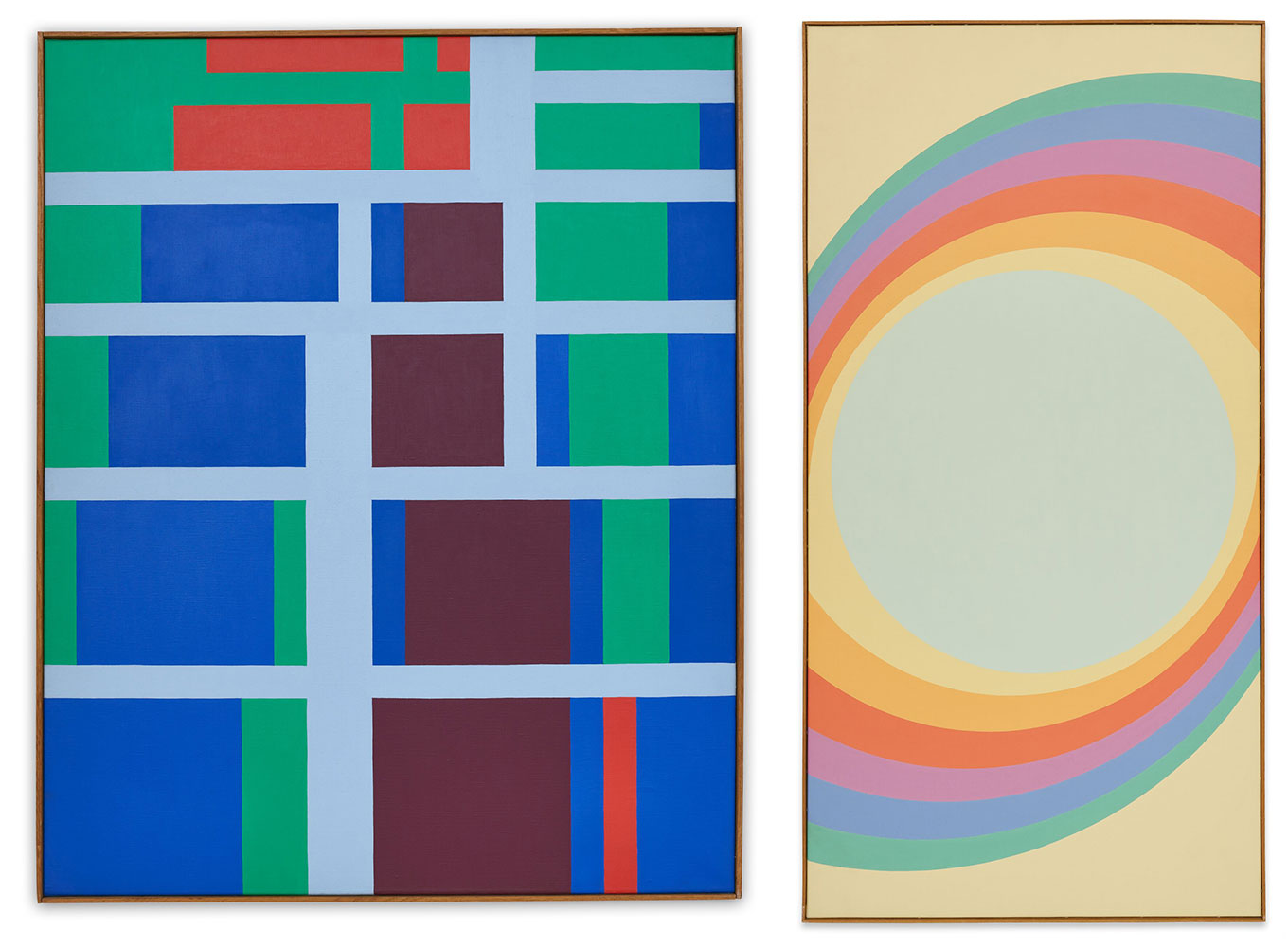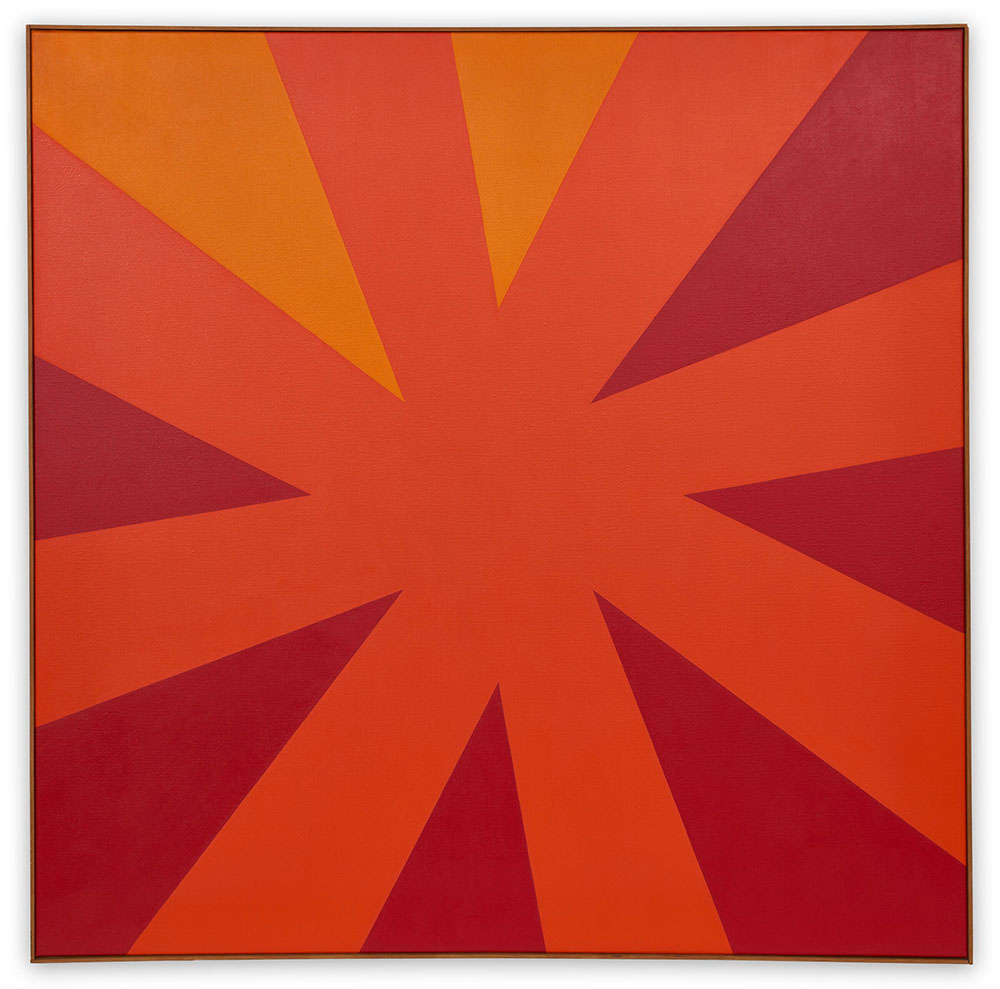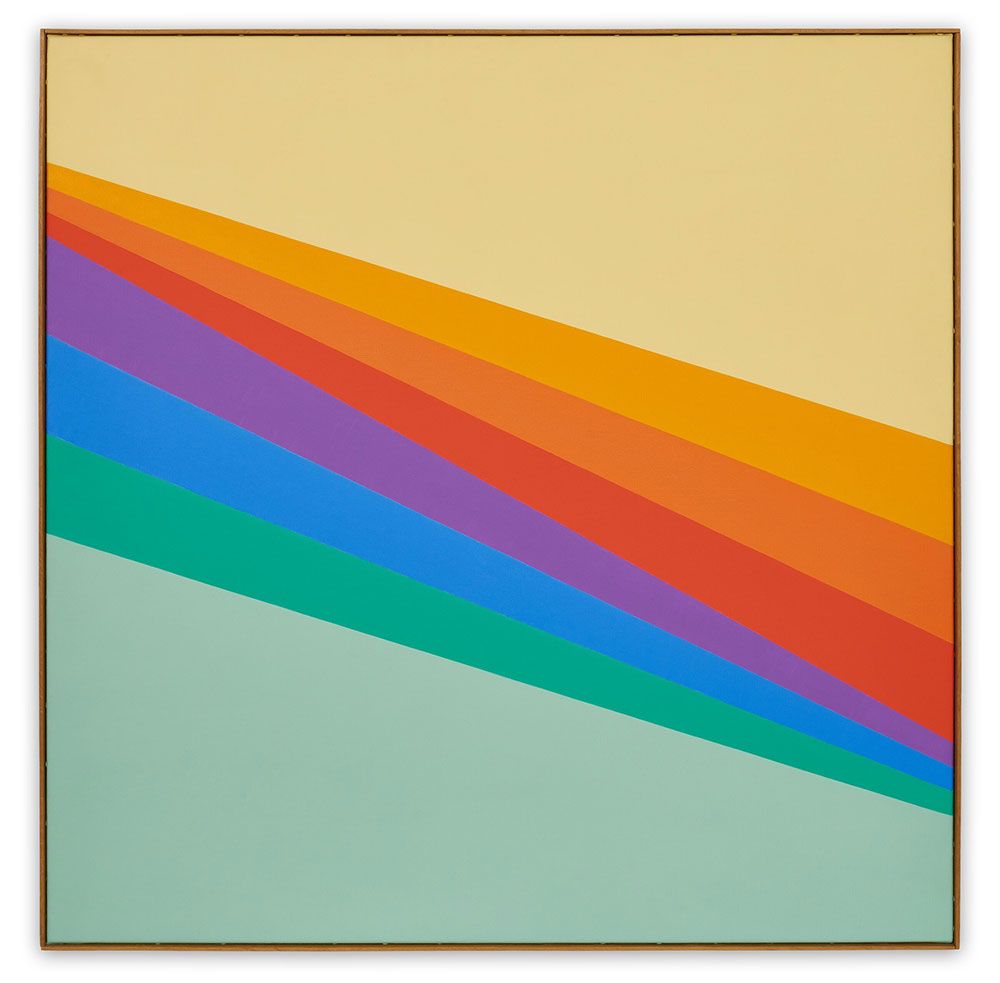PRESENTATION: Verena Loewensberg-Kind of Blue
 Born in 1912, Swiss artist Verena Loewensberg was a leading figure of the influential Zurich school of concrete artists. The only female member of the group, which also included Max Bill, Camille Graeser and Richard Paul Lohse, Verena Loewensberg distinguished herself through her oeuvre’s formal and chromatic flair. In her work, structured oil compositions are animated by wide-ranging color and shape, yielding a precise yet poetic art.
Born in 1912, Swiss artist Verena Loewensberg was a leading figure of the influential Zurich school of concrete artists. The only female member of the group, which also included Max Bill, Camille Graeser and Richard Paul Lohse, Verena Loewensberg distinguished herself through her oeuvre’s formal and chromatic flair. In her work, structured oil compositions are animated by wide-ranging color and shape, yielding a precise yet poetic art.
By Dimitris Lempesis
Photo: Hauser & Wirth Gallery Archive
“Kind of Blue”, the first solo exhibition in the United States dedicated to Verena Loewensberg features paintings spanning four decades of the artist’s career, as well as the only sculptural work Loewensberg ever made. In the 1960s, Loewensberg opened City-Discount, Zurich’s first jazz record store. Titled after Miles Davis’ seminal 1959 album, the exhibition gives visitors the opportunity to discover the artist’s love of jazz, which expressed itself in her paintings through rhythm and movement. Loewensberg belonged to a generation of international female constructivist and concrete artists, including Marlow Moss, Vera Molnar, Carmen Herrera and Sophie Warburg, whose pioneering practices have received renewed attention for their significant contributions to the development of hard edge, geometric and abstract painting in the 20th Century. The works on view in this exhibition, which date from 1944 to 1985, highlight Loewensberg’s deep engagement with contemporaneous movements such as color field, pop art, hard-edge abstraction and minimalism in their bold use of color and patterning, as well as in her technical mastery of free-hand painting. In 1927, Loewensberg began studying weaving, embroidery, design and color theory. Like Sonia Delaunay and Sophie Taeuber-Arp, who worked in applied arts, she firmly believed in the application of geometric abstraction to everyday life, and throughout her career worked in applied arts and design. An example of one of her textile patterns is reproduced as a wallpaper on the third floor of the exhibition. Later in 1934, Loewensberg met friends Max Bill and Georges Vantongerloo, members of the abstraction-création artist group, both of whom would have a profound and lasting impact on her own work. After briefly studying at the Académie Moderne in Paris in 1935, Loewensberg ultimately abandoned her formal academic training. Back in Zurich, she started painting on paper and paperboard and in 1936 was one of the few women who took part in the groundbreaking exhibition “Zeitprobleme in der Schweizer Malerei und Plastik” (Time Problems in Swiss Painting and Sculpture) at the Kunsthaus Zurich. In 1937, she was the only woman present at the founding of the Allianz group, an association of modern Swiss artists whose members were to include both Taeuber-Arp and Meret Oppenheim. Working from preparatory sketches and transferring the final design to the canvas with light construction lines, Loewensberg’s liberated free-hand approach became a vehicle for self-expression. The unexpected liveliness with which she treated the motif of the grid, for instance, is apparent in a painting from 1950 on view in the exhibition: here she has created a compositional system that fragments and perturbs the grid, separating and layering rectangular blocks of color, both in primary pigments and greens and purples reminiscent of Vantongerloo’s palette. Loewensberg spread the grid out across her canvas like a composer would with sheets of music, arranging color and shape as extemporized notes that not only relate to but also define one another. In the ensuing decades, her work focused more on formal elements and series of works that broke from the strictures of concrete art. Moving closer to the ideas of color field, hard-edge and minimalism, many of her paintings took on an atmospheric quality, an effect that she called ‘Stimmung,’ which refers to their overall tone or mood. On view on the first floor is a series of deceptively simple two-toned paintings from the 1970s and 1980s in which she used closely related colors to render monochromatic figures from a series of overlapping squares. In 1980, at the age of 68, Loewensberg traveled to Sicily to visit the Greek temples, a journey that led not only to the production of a new series of paintings, but also the creation, in 1982, of the only sculpture she would ever make. This untitled sculpture is comprised of five pairs of parallelepipeds constructed out of wood. With its architectural composition and symmetry evoking the formal elements of ancient Greek temples, the work is one of the very few by Loewensberg that allude to existing structures.
Photo: Verena Loewensberg, Untitled, 1963, Oil on canvas, 60 x 60 cm / 23 5/8 x 23 5/8 in, © 2024, Verena Loewensberg Stiftung, ZürichPhoto: Jon Etter, Courtesy Hauser & Wirth Gallery
Info: Curator: Henriette Coray Loewensberg, Hauser & Wirth Gallery, 32 East 69th Street, New York, NY, USA, Duration: 21/2-27/4/2024, Days & Hours: Tue-Sat 10:00-18:00, www.hauserwirth.com/

Right: Verena Loewensberg, Untitled, 1971–1972, Oil on canvas, 160 x 81 cm / 63 x 31 7/8 in, © 2024, Verena Loewensberg Stiftung, ZürichPhoto: Jon Etter, Courtesy Hauser & Wirth Gallery


